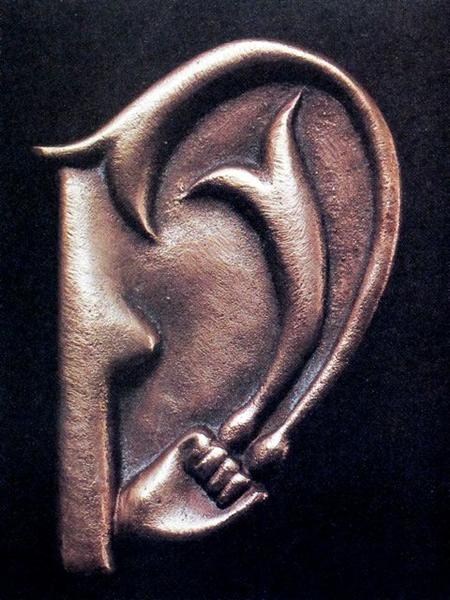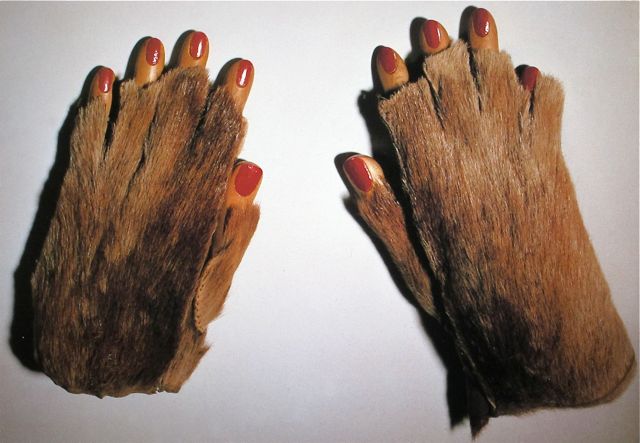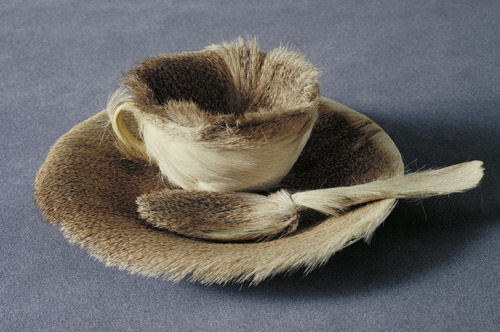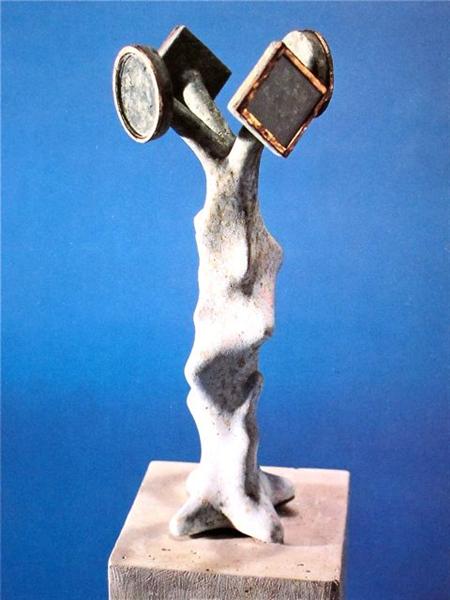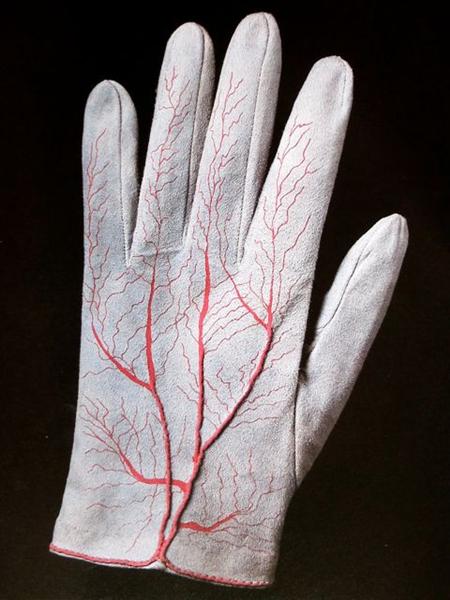BIOGRAPHY
Méret Elisabeth Oppenheim (6 October 1913 – 15 November 1985) was a German-born Swiss Surrealist artist and photographer.
EARLY LIFE
In 1918, Oppenheim was born and raised in Berlin-Charlottenburg, Germany. Her family was rather progressive for the time, with her grandmother being active in the Swiss women's rights movement; she was encouraged by her aunt to collect prints by Paul Klee, an early inspiration for her. Her father [a psychoanalyst] encouraged her to record her dreams from a young age, which she continued to do throughout her life. Finding school life in Switzerland unfulfilling, she enrolled in the Paris Académie de la Grande Chaumière as a young adult, finally brushing up against Surrealist artists almost twice her age, and rising through the ranks as a unique and inventive thinker. In 1933, she exhibited her first sculpture, the bronze Giacometti's Ear (1933), a turning point in Oppenheim's career and a breakthrough for the Surrealists, who so far had not allowed women to participate as artists.[3]
CAREER
At the age of 22, Oppenheim would create and display her own avant-garde jewlry, most notably a bracelet covered in fur; when she crossed hairs with Breton, she planned on creating an entire collection of fur-covered items for an exhibition he had announced, culminating in one of her most well-known pieces, Object, surreptitiously titled “Breakfast in Fur” by Breton. [2] Within the art sphere, Oppenheim garnered a dual reputation as an artist and a muse, often posing nude for other artists; as a result, her fellow photographers used her to experiment with their work, but prevented her from making much work herself. It was around this time that she also developed an affair with Max Ernst, which ended disastrously in 1937 and caused both of them a great deal of strife. She managed to make it through this time by engaging primarily in private work, honing her skills in painting, photography, and sculpture. Most importantly, the work she made ended up focusing on her experience as a female artist in a male-dominated space; she worked out her own frustrations with this paradigm throughout the years, creating an extensive catalogue of work that she had a habit of destroying as well.
LATER LIFE
In 1959, she held one of the most-copied events in modern art. It was a private performance named Spring Banquet. Invitees feasted on a naked woman's body in a celebration of fertility and nature. Breton persuaded her to repeat it at EROS (Exposition Internationale du Surréalisme) in Paris, as Cannibal Feast, a name that garnered her undue criticism for supposedly exploiting a woman as an edible object.[3] In her famous acceptance speech for the City of Basel Art Prize in 1975, Oppenheim discussed the subject of female artist and personal freedom. She believed in “androgyny of the mind” and proclaimed, “Freedom is not given to you, you have to seize it.” [1] Later on, Oppenheim had rejected the label of Surrealist, commenting in 1984: "I believe what Breton wrote about poetry and art in his first manifesto in 1924 were some of the most beautiful words ever to have been written on the subject. By contrast, I feel quite sick when I think of all the things making reference to Surrealism today." [3] Eventually, Oppenheim died in 1985 at the age of 72, in Basel, Switzerland.
SELECTED WORKS
PERIOD 1 (DATE-DATE)
BIBLIOGRAPHY
- 1. n/a. "Meret Oppenheim | Artist Profile" National Museum of Women in the Arts. https://nmwa.org/art/artists/meret-oppenheim/
- 2. Colón, Lee. "Meret Oppenheim | MoMA." Museum of Modern Art. https://www.moma.org/artists/4416-meret-oppenheim
- 3. Author. "Meret Oppenheim Art, Bio, Ideas." The Art Story. https://www.theartstory.org/artist/oppenheim-meret/
- 4.1 n/a. "Méret Oppenheim." Wikipedia.com. https://en.wikipedia.org/wiki/M%C3%A9ret_Oppenheim
